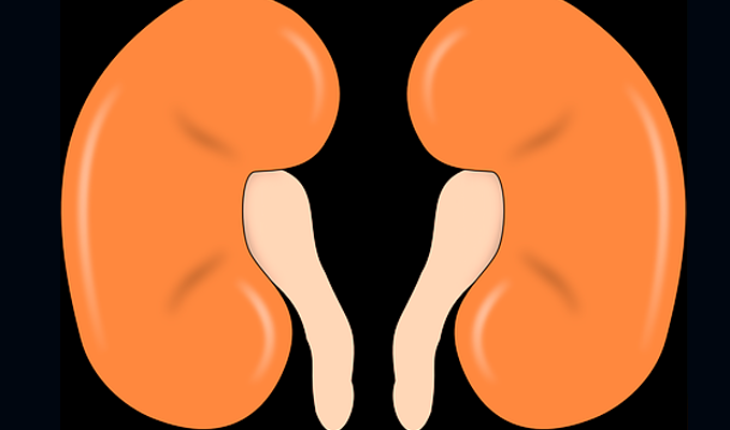Photograph/ Pixabay
World–The Kidney Project, a national effort to develop an implantable bioartificial kidney that could eliminate the need for dialysis, will announce a key milestone in a presentation on November 7, 2019 at the American Society of Nephrology Kidney Week 2019 conference in Washington, DC.
The team will report that UC San Francisco scientists have successfully implanted a prototype renal bioreactor containing human kidney functional cells in pigs without significant safety issues. The device, which is about the size of a deck of cards, did not trigger an immune reaction or cause blood clots in animals, an important milestone on the road to future human trials.
“This is the first demonstration that kidney cells can be successfully implanted into a large animal without immunosuppression and kept healthy enough to perform their function. This is a key milestone for us,” said Kidney Project co-leader Shuvo Roy, Ph.D., faculty member in the Department of Bioengineering and Therapeutic Sciences, a joint department of UCSF’s Schools of Pharmacy and Medicine. “Based on these results, we can now focus on expanding the bioreactor and combining it with the blood filtration component of the artificial kidney.”
The UCSF-Vanderbilt kidney project aims to eliminate dialysis
Nearly 750,000 Americans, and two million people worldwide, are being treated for end-stage kidney disease (ESRD), and rates of kidney disease are growing rapidly, leading to an urgent shortage of kidneys for transplantation. As of 2016, only 21,000 donor kidneys were available for transplantation in the U.S. On a waiting list of almost 100,000 and stretching from five to ten years.
Most patients who expect a kidney transplant survive by undergoing long, cumbersome dialysis treatments several times a week to remove toxins from the blood, but dialysis does not replace many essential kidney functions and, on average, only 35 percent of dialysis patients remain alive after five years. Dialysis and other treatments for ESRD, which are universally covered by Medicare, cost $35 billion in 2016, representing seven percent of Medicare’s annual budget.
The Kidney Project (pharm.ucsf.edu/kidney) is led by Roy and the nephrologist at Vanderbilt University Medical Center William H. Fissell, MD, who for more than a decade have been working to develop an implantable bioartificial kidney with the goal of eliminating dialysis and alleviating donor kidney shortage.
The implantable device developed by The Kidney Project consists of two components: a blood filtration system called a hemofilter, which removes toxins from the blood by passing it through silicon membranes manufactured with precisely nanoscale pores; and a bioreactor, containing cultured human kidney cells intended to perform other kidney functions, such as maintaining proper fluid volume and blood pressure, adjusting salt levels, and producing essential hormones.
After promising studies on large animals, The Kidney Project’s hemofiltration system is currently awaiting FDA approval for an initial clinical trial to assess its safety. Bioreactor technology has been tested in laboratory experiments, but until now it has not been implanted in animals.
Bioreactor containing human kidney cells implanted in pigs without an immune reaction or blood clots
At The Kidney Project’s November 7 Kidney Week presentation, Rebecca Gologorsky, MD, a UCSF Surgical Innovations Fellow member of the team, will show how the silicon membranes inside the implanted bioreactor protect closed human kidney cells from the host’s immune system by maintaining blood-borne immunity. cells and proteins outside the device.
“It has been a holy grail of transplant therapies to find ways to avoid the need for lifelong immunosuppressive drugs that are often required to prevent immune rejection,” Roy said. “These drugs not only expose patients to infections and other harmful side effects, but have been shown to directly damage transplanted cells and organs, eroding the therapeutic benefit of transplants over time.”
Roy says another key benefit of preventing immunosuppression is its cost to patients: “Medicare currently covers lifelong dialysis, but immunosuppressive drugs are covered only for the first three years after the transplant. Many patients receiving kidney transplants eventually lose the new organ because they were unable to afford the immunosuppressive drugs needed to keep it healthy.”
Roy’s team also carefully designed the prototype bioreactor to prevent the formation of blood clots that could lead to pulmonary embolism or stroke, a major challenge faced by all patients with long-term medical implants. They did this by coating the silicon membrane filters that contact the blood with biologically friendly molecules and designing the device to prevent turbulent blood flow that can also trigger clotting.
“We were unable to use the standard blood-friendly coatings that have been developed for heart valves, catheters and other devices because they are so thick that they would completely block the pores of our silicon membranes,” Roy said. “One of our achievements has been to design a suitable surface chemistry on our silicon membranes that makes them look biologically blood-friendly.”
The results, says Roy, demonstrate progress toward The Kidney Project’s expected clinical “trifecta”: a heart-driven device that runs without batteries or other external connections that could introduce a risk of infection and can clean blood without anti-rejection or anticoagulant medications.
Researchers are now aiming to scale the prototype bioreactor to contain more cells to test whether the implanted device can complement renal function in animals with renal impairment, with the ultimate goal of eventually moving the device to human safety tests.
“The advancement of complex cell therapy like this in the clinic will not be a trivial task, for example, will require substantial investments in cell production and characterization in GMP controlled facilities to avoid any possibility of contamination,” Roy said. “We have now confirmed that we are on the right track to move forward with these efforts.”
Source: Medical Press
translated from Spanish: Successfully implant an artificial kidney, this could help prevent dialysis
November 11, 2019 |





